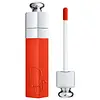What's inside
What's inside
 Key Ingredients
Key Ingredients

No key ingredients
 Benefits
Benefits

 Concerns
Concerns

 Ingredients Side-by-side
Ingredients Side-by-side

Water
Skin ConditioningGlycerin
HumectantMethyl Hydrogenated Rosinate
PerfumingButylene Glycol
HumectantPolyglyceryl-2 Triisostearate
EmulsifyingAlcohol
AntimicrobialPolyglycerin-3
HumectantHydroxyethyl Acrylate/Sodium Acryloyldimethyl Taurate Copolymer
Emulsion StabilisingSqualane
EmollientPolyurethane-35
1,2-Hexanediol
Skin ConditioningLecithin
EmollientMenthoxypropanediol
MaskingParfum
MaskingTrimethylolpropane Triisostearate
EmollientSodium Hyaluronate
HumectantPolysorbate 60
EmulsifyingHydroxyacetophenone
AntioxidantSodium Benzoate
MaskingPrunus Avium Seed Oil
EmollientAmmonium Glycyrrhizate
MaskingSorbitan Isostearate
EmulsifyingTocopherol
AntioxidantMethylpropanediol
SolventEthyl Vanillin
MaskingCitric Acid
BufferingCaprylyl Glycol
EmollientCapsicum Frutescens Fruit Extract
Skin ConditioningPropyl Gallate
AntioxidantPhenylpropanol
MaskingPentaerythrityl Tetra-Di-T-Butyl Hydroxyhydrocinnamate
AntioxidantCI 73360
Cosmetic ColorantCI 15985
Cosmetic ColorantCI 15850
Cosmetic ColorantCI 45410
Cosmetic ColorantCI 17200
Cosmetic ColorantWater, Glycerin, Methyl Hydrogenated Rosinate, Butylene Glycol, Polyglyceryl-2 Triisostearate, Alcohol, Polyglycerin-3, Hydroxyethyl Acrylate/Sodium Acryloyldimethyl Taurate Copolymer, Squalane, Polyurethane-35, 1,2-Hexanediol, Lecithin, Menthoxypropanediol, Parfum, Trimethylolpropane Triisostearate, Sodium Hyaluronate, Polysorbate 60, Hydroxyacetophenone, Sodium Benzoate, Prunus Avium Seed Oil, Ammonium Glycyrrhizate, Sorbitan Isostearate, Tocopherol, Methylpropanediol, Ethyl Vanillin, Citric Acid, Caprylyl Glycol, Capsicum Frutescens Fruit Extract, Propyl Gallate, Phenylpropanol, Pentaerythrityl Tetra-Di-T-Butyl Hydroxyhydrocinnamate, CI 73360, CI 15985, CI 15850, CI 45410, CI 17200
Polyglyceryl-2 Isostearate/Dimer Dilinoleate Copolymer
EmollientPolyglyceryl-2 Triisostearate
EmulsifyingCaprylic/Capric Triglyceride
MaskingDiisostearyl Malate
EmollientSilica Dimethyl Silylate
EmollientPolyglyceryl-2 Isostearate/Dimer Dilinoleate Copolymer, Polyglyceryl-2 Triisostearate, Caprylic/Capric Triglyceride, Diisostearyl Malate, Silica Dimethyl Silylate, CI 15850, CI 19140, Coco-Caprylate/Caprate, Castor Oil/Ipdi Copolymer, Parfum, Caprylic/Capric/Succinic Triglyceride, Sorbitan Sesquioleate, Linalool
Ingredients Explained
These ingredients are found in both products.
Ingredients higher up in an ingredient list are typically present in a larger amount.
Ci 15850 is the pigment color red. It is an azo dye and created synthetically.
Azo dyes need to be thoroughly purified before use. This allows them to be more stable and longer-lasting.
This ingredient is common in foundations, lipsticks, and blushes. This color is described as brown/orangey red.
It has many secondary names such as Red 6 and Red 7. According to a manufacturer, Red 6 usually contains aluminum.
Learn more about CI 15850Parfum is a catch-all term for an ingredient or more that is used to give a scent to products.
Also called "fragrance", this ingredient can be a blend of hundreds of chemicals or plant oils. This means every product with "fragrance" or "parfum" in the ingredients list is a different mixture.
For instance, Habanolide is a proprietary trade name for a specific aroma chemical. When used as a fragrance ingredient in cosmetics, most aroma chemicals fall under the broad labeling category of “FRAGRANCE” or “PARFUM” according to EU and US regulations.
The term 'parfum' or 'fragrance' is not regulated in many countries. In many cases, it is up to the brand to define this term.
For instance, many brands choose to label themselves as "fragrance-free" because they are not using synthetic fragrances. However, their products may still contain ingredients such as essential oils that are considered a fragrance by INCI standards.
One example is Calendula flower extract. Calendula is an essential oil that still imparts a scent or 'fragrance'.
Depending on the blend, the ingredients in the mixture can cause allergies and sensitivities on the skin. Some ingredients that are known EU allergens include linalool and citronellol.
Parfum can also be used to mask or cover an unpleasant scent.
The bottom line is: not all fragrances/parfum/ingredients are created equally. If you are worried about fragrances, we recommend taking a closer look at an ingredient. And of course, we always recommend speaking with a professional.
Learn more about ParfumThis ingredient is a form of glycerin with emulsifying and emollient properties.
As an emulsifier, this ingredient helps keep products together while adding a thick texture. The manufacturer states this ingredient has emollient properties. Emollients help keep the skin hydrated by trapping moisture in.
Polyglyceryl-2 Triisostearate is created by reacting diglycerin and isostearic acid. Due to the isostearic acid base, it may not be safe for Malassezia or fungal acne.
Learn more about Polyglyceryl-2 Triisostearate